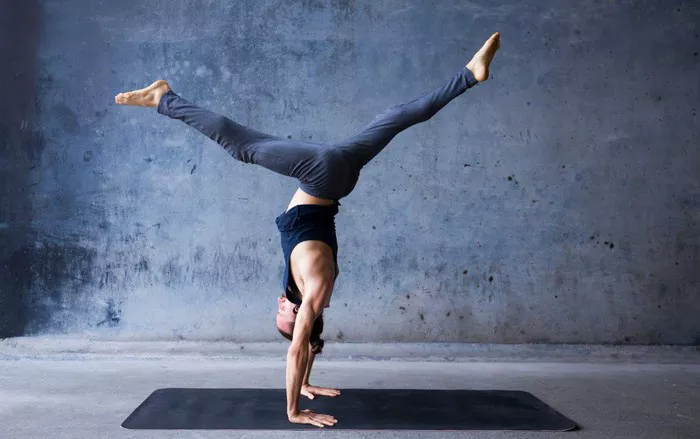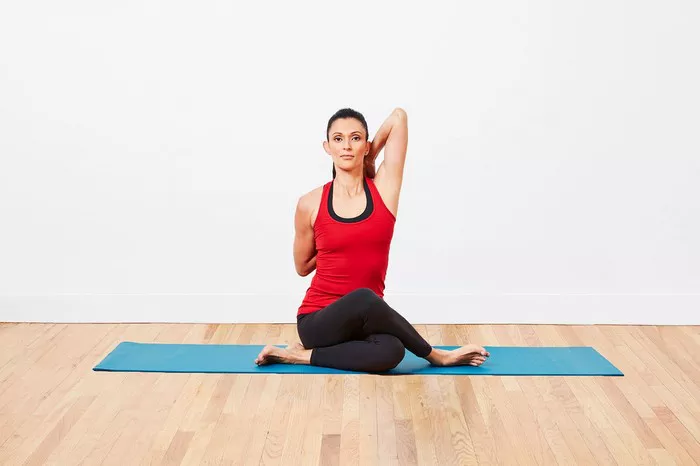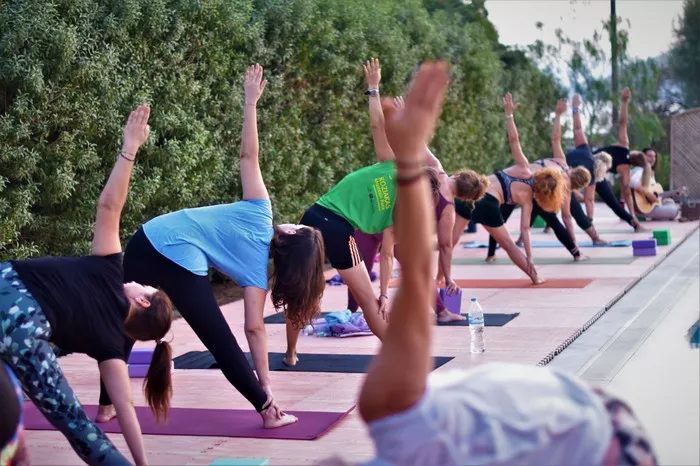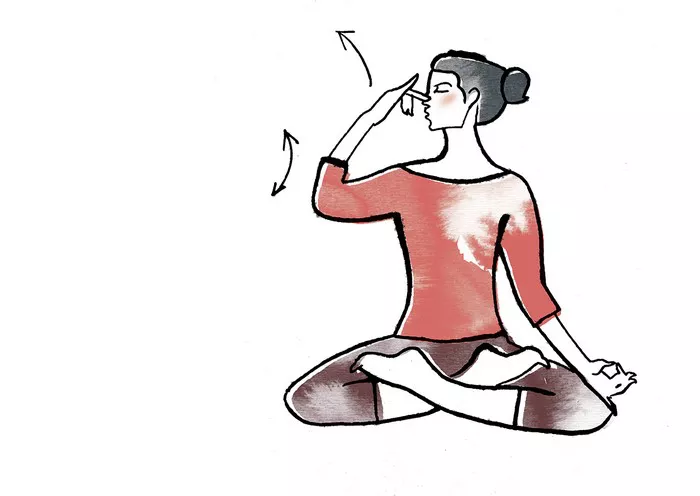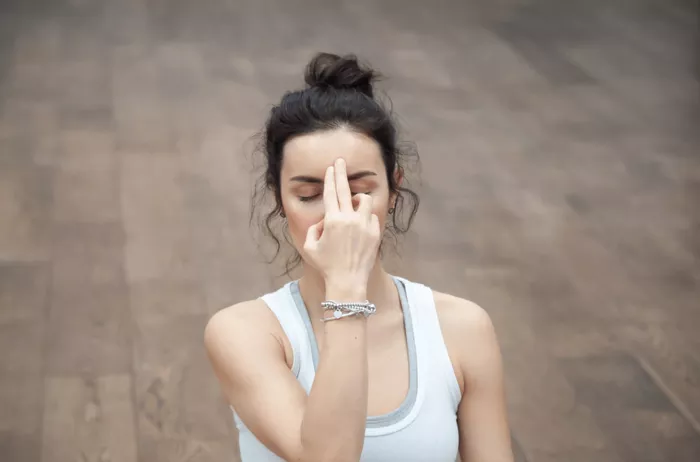Yoga has been practiced for thousands of years, and many of its postures, or asanas, have ancient roots that trace back to India’s spiritual traditions. The Cow Face Pose, also known as Gomukhasana, is one of these postures. With its deep physical and philosophical significance, Gomukhasana offers both practitioners and students a window into the rich cultural tapestry that forms the basis of yoga. This article delves into the origin of the Cow Face Pose, its cultural and historical significance, and its benefits, offering insight into why it continues to be a key component of modern yoga practice.
The Sanskrit Name: Gomukhasana
The Cow Face Pose gets its name from the Sanskrit words “Go,” meaning cow, and “Mukha,” meaning face. Together, they form “Gomukha,” which translates to “cow’s face.” In this pose, the arrangement of the body is thought to resemble the face of a cow, with the legs acting as the “ears” and the arms forming the “horns.” The name reflects the artistic and symbolic connection between the physical shape of the pose and the cow, an animal that holds significant importance in Hindu culture and Indian tradition.
The idea of using animal imagery in the naming of asanas is common in yoga. Many poses are named after animals to reflect their symbolic attributes, qualities, or physical characteristics. For instance, the Cobra Pose (Bhujangasana) mimics the shape of a cobra, and the Downward-Facing Dog (Adho Mukha Svanasana) resembles a dog stretching forward. Similarly, Gomukhasana uses the symbolism of the cow to evoke certain qualities associated with the animal, such as gentleness, strength, and connection to the earth.
The Role of the Cow in Hinduism
To understand the deeper cultural significance of Gomukhasana, it is essential to explore the role of the cow in Hinduism, as this is where much of the pose’s symbolic meaning comes from. Cows are regarded as sacred animals in Hinduism, symbolizing non-violence, nourishment, and fertility. The cow is also associated with the goddess Kamadhenu, the divine, wish-fulfilling cow that is often depicted as providing abundance, peace, and prosperity to all beings.
In addition to these symbolic associations, cows have been integral to the agrarian and pastoral life of India for centuries. Their milk, dung, and even their labor have supported rural life in various forms, earning them a revered place in the hearts and minds of many communities. The Cow Face Pose, therefore, pays homage to this revered creature and its relationship to human life.
In yoga, many asanas are meant to cultivate specific virtues or aspects of the self. By practicing Gomukhasana, practitioners are thought to align themselves with the qualities of the cow—such as groundedness, peacefulness, and gentleness—while also gaining physical benefits from the stretch and alignment of the body.
The Historical Context of Gomukhasana
While Gomukhasana may seem like a relatively modern addition to yoga as practiced in the West, its origins can be traced back to ancient texts that describe asanas. The most prominent of these texts is the Hatha Yoga Pradipika, an important 15th-century manual that is often regarded as one of the foundational works in the study of hatha yoga. The Hatha Yoga Pradipika details numerous postures designed to purify the body and prepare the practitioner for deeper meditation and spiritual practices.
Gomukhasana is mentioned in various yoga texts, including the Gheranda Samhita, another significant work in the hatha yoga tradition. Although these texts do not necessarily elaborate on the specific origin of the pose, they offer insight into its role in cultivating both physical and mental well-being. Through its focus on opening the chest, shoulders, and hips, Gomukhasana became recognized as a powerful pose for balancing the body’s energy and preparing the practitioner for higher states of consciousness.
The practice of yoga itself evolved over thousands of years, with early practices focused on seated meditation, breath control, and spiritual development. Later, asanas like Gomukhasana were introduced to help practitioners maintain the physical stamina and flexibility necessary for long periods of meditation and devotion. Gomukhasana, therefore, was not merely a physical exercise but also a spiritual tool.
The Development of Gomukhasana in Modern Yoga
In modern times, yoga has expanded far beyond its roots in spiritual and religious practice. As yoga spread to the West in the late 19th and early 20th centuries, it became more secularized and increasingly popular as a form of physical exercise and personal wellness. The Cow Face Pose, like many other traditional asanas, has undergone transformation in how it is taught and practiced.
In contemporary yoga classes, Gomukhasana is often introduced as a stretching and strengthening pose that targets the shoulders, hips, and legs. Teachers may emphasize the importance of proper alignment, mindful breathing, and the emotional release that can accompany this deep stretch. The pose is frequently used as a part of a larger sequence aimed at improving flexibility, posture, and overall body awareness.
Despite its physical applications in modern yoga, Gomukhasana still retains much of its original significance. Whether practiced in a gentle restorative class or as part of a vigorous flow, the Cow Face Pose encourages a sense of grounding, presence, and connection to both the body and the environment. For practitioners who choose to embrace the symbolic aspects of the pose, Gomukhasana offers a reminder of the divine connection between the human body and the natural world.
The Physical Benefits of Gomukhasana
While the Cow Face Pose is often appreciated for its deep cultural and symbolic roots, it is also renowned for its numerous physical benefits. As a seated posture, it stretches and opens the shoulders, hips, and chest, making it a powerful tool for improving flexibility, posture, and overall mobility. Here are some of the key physical benefits associated with Gomukhasana:
1. Shoulder and Upper Back Stretch
Gomukhasana is particularly effective for stretching the shoulders, a common area of tension for many people. The action of bringing one arm behind the back to clasp the opposite hand helps to open the shoulders and upper back, releasing tightness and promoting better posture. This stretch can be especially beneficial for those who spend long hours at a desk or computer.
2. Hip Flexibility
The seated position of Gomukhasana also stretches the hips, specifically the hip flexors, glutes, and the outer thighs. By stacking the knees on top of one another and drawing the feet towards the hips, the pose creates a deep stretch in the hip area. This can help alleviate tightness and discomfort from sitting for prolonged periods and enhance overall flexibility.
3. Improved Posture
Because Gomukhasana opens the chest and encourages the alignment of the spine, it can contribute to improved posture. Practicing this pose regularly can help strengthen the muscles of the back and core, making it easier to maintain an upright, balanced posture throughout the day.
4. Enhanced Circulation
Gomukhasana promotes better circulation in the lower body, particularly in the legs. The position of the legs, with one leg folded over the other, helps to improve blood flow to the hips, knees, and ankles. This can reduce stiffness and improve mobility in the lower extremities.
5. Stress Relief and Emotional Balance
In addition to its physical benefits, Gomukhasana can also offer emotional and mental relief. As a hip-opening posture, it may help release stored tension and stress, especially in individuals who hold emotional or physical tension in the hips. The act of sitting with intention and focusing on the breath while in the pose can also promote a sense of calm and mental clarity.
Conclusion
The Cow Face Pose, or Gomukhasana, has a rich history that spans both cultural and spiritual realms. With its deep roots in Hinduism, where the cow is a revered animal, the pose symbolizes peace, grounding, and abundance. Over time, Gomukhasana has evolved into an integral part of modern yoga, appreciated not only for its physical benefits but also for its connection to ancient traditions.
By practicing Gomukhasana, yoga practitioners can tap into its profound symbolism and experience its many physical benefits, including increased flexibility, improved posture, and greater emotional balance. Whether approached as a physical exercise or as a spiritual practice, the Cow Face Pose continues to play an essential role in the diverse and vibrant world of yoga.
Related Topics:


